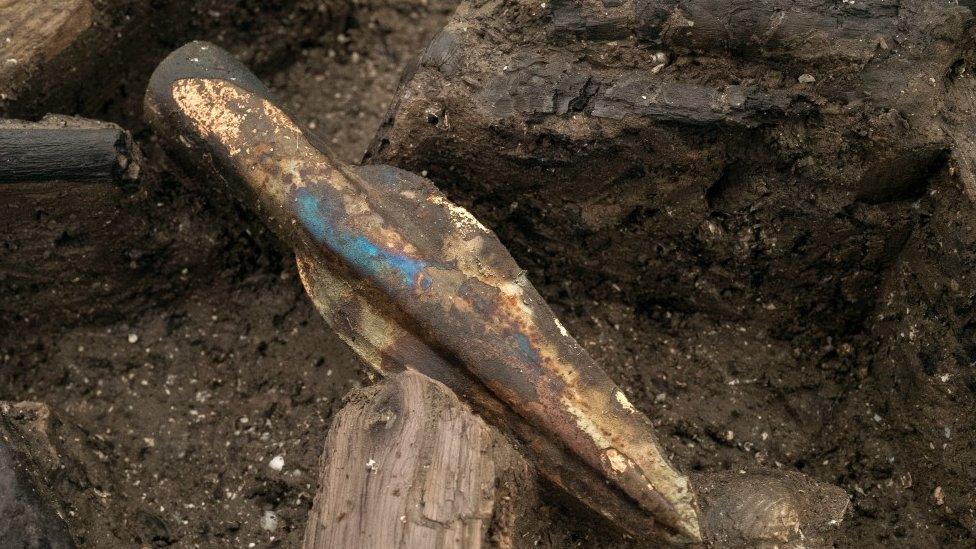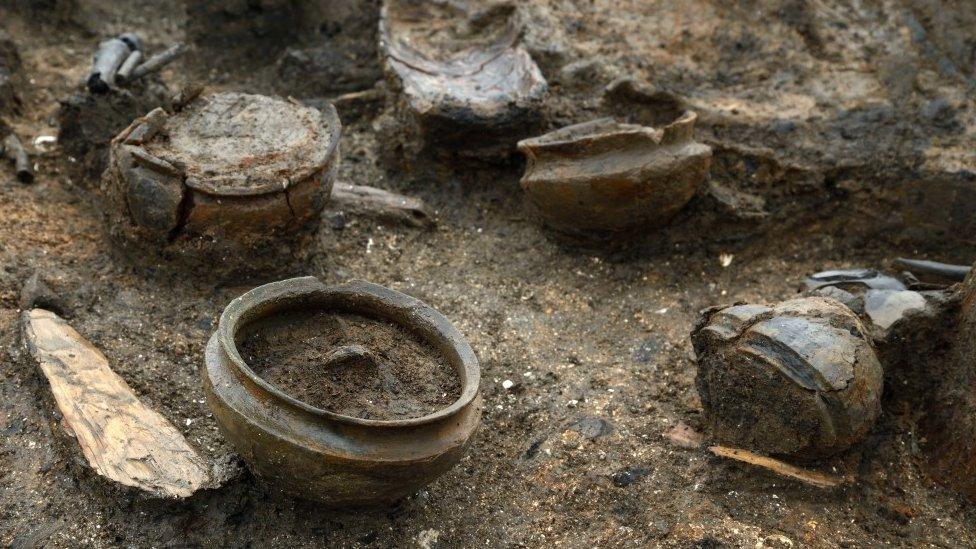Bronze Age Village: Cambridge settlement reveals how we used to live
- Published
- comments

Archaeologists have been hard at work at the site in Must Farm, in Cambridgeshire
Archaeologists have been excavating a Bronze Age settlement near Cambridge in the east of England and have discovered it was destroyed in a large fire.
During the fire buildings which were built on stilts fell into the river, which is why many parts of the village are so well preserved.
Because of this, historians have managed to study the remains of the town, and learn about how we used to live in Britain around 3000 years ago.
This includes what Bronze Age people used to eat for breakfast, and how they built their houses.
Bronze Age life at Must Farm, Cambridgeshire

The excavation has been going for a long time. The site was first discovered in the 1990s, and in 2015 staff at the University of York began a deeper investigation.
Around 3000 years ago, the town burned down in a huge fire with buildings, tools and goods all falling into a nearby muddy river.
Some historians have described it as "Britain's Pompeii" - because, despite the fire, we've managed to learn so much from the site due to how well the river water and mud preserved some of the artefacts.

Artefacts like this spearhead have been investigated to find out more about how we lived in the Bronze Age
What was Pompeii?
Pompeii was a bustling city during the Roman Empire. In AD 79 a big volcano nearby, called Mount Vesuvius, erupted and covered the town in ash.
Pompeii was buried in a mass of super fast flowing, incredibly hot ash and lava as the volcano erupted; which, as it cooled, preserved large parts of the city in rock. People travel from all over the world to visit the ancient Pompeii in Italy and walk through its Roman streets.
Because the huge fire at Must Farm preserved so much of history people are comparing this excavation to Pompeii.
How did people live in Britain 3000 years ago?

These are some of the pots found on the site
According to research into some of the artefacts at the site, people here used to eat a bit like us today - enjoying porridge, cereal and honey for breakfast and beef or fish for tea!
We've also been able to learn about what tools were used then - axes, razors and sickles. Axes would have been used to chop wood, and sickles were used to harvest crops.
With more analysis, the team of experts hope to discover if goods had come from other places across Europe - for example jewellery or beads.
